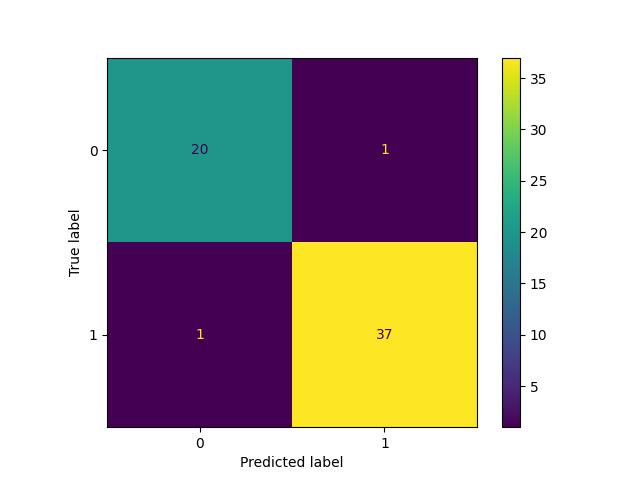The purpose of this repo is to classify comments into the two groups of spam and non-spam. Dataset for this analysis can be found: https://archive.ics.uci.edu/ml/datasets/YouTube+Spam+Collection
- Python 3.10 (test on 3.8 works fine!)
- Poetry is recommended (also requirement.txt is provided)
To create virtual env using requirement.txt:
pip install -r requirements.txt
or To create virtual env using poetry:
poetry install
To run the single executable file you can main.py. This will compare and find the best possible model for the provided data.
python main.py
You can change the functionality of the code by changing the configuration file in config folder.
We derived two different datasets from the initial dataset. In the first approach we find the word vector for each word after the distillation phase and then average them to represent the sentence sentiment, the another approach is use TF-IDF to weight the presence of each word in the sentence (over all comments) and then calculate the average.
EXTRA TREES CLASSIFIERS and LOGISTIC REGRESSION are used to classify this vectors of dimension 300 based on the CLASS column which represents Spam and non-spam situation for each comment.
Results demonstrate solid precision and recall simplified EXTRA TREES CLASSIFIERS (~96%) which was selected as the best model.
This file is yaml file and can be found in config/default_settings.yml. Dynaconf library will handle environment variable injections and interactions.
- Log setting: you can change the format and level of logs generated by this program.
- Dataset: you can add or remove files from this list, possibly you need to be consistent with previous columns definition or change the code as needed.
- Random State: make sure the results are reproducible.
- Preprocessing: In this section you can configure the pipeline that manipulate comment data to have better clarity in the comment (Content) section.
- Modeling: we can change the portion of the train, validation and test dataset as needed, also we can define the search grid so during the training process using training data and validation data to fine-tune hyperparameters and then in it the end compare models based on the test dataset which is unseen.
DEFAULT:
LOG_SETTING:
LEVEL: info
FORMAT: '%(asctime)s - %(name)s - %(levelname)s - %(message)s'
DATE_FORMAT: '%Y-%m-%d %H:%M:%S %z'
DATASET:
CSV_FILES: [ 'Youtube01-Psy.csv',
'Youtube02-KatyPerry.csv',
'Youtube03-LMFAO.csv',
'Youtube04-Eminem.csv',
'Youtube05-Shakira.csv',
]
RANDOM_STATE: 42 # set it to zero to disable it
PREPROCESSING: # change enabled to true and false to disable the component
DEDUPLICATION_COLUMNS: [ 'COMMENT_ID' ]
STRIP_TEXT:
ENABLED: true
FLAG_YOUTUBE:
ENABLED: true
FLAG_URL:
ENABLED: true
LOWER_CASE:
ENABLED: true
REPLACE_EMOJI:
ENABLED: true
NUMBER_OF_PROCESS: 0 # set zero to use all the cores
REMOVE_SPECIAL_CHARACTERS:
ENABLED: true
REMOVE_NUMBERS:
ENABLED: true
REMOVE_SHORT_WORD:
ENABLED: true
REMOVE_EXTRA_WHITE_SPACE:
ENABLED: true
LEMMATIZATION:
ENABLED: true
SPACY_MODEL: en_core_web_md
NUMBER_OF_PROCESS: 1
MODELING:
SPACY:
MODEL: en_core_web_md
NUMBER_OF_PROCESS: 1
TF_IDF:
MAX_DF: 1
MIN_DF: 1
SPLIT: # sum of the following numbers should be one
TRAIN: 0.94
VAL: 0.03
TEST: 0.03
EXTRA_TREES_CLASSIFIERS:
N_ESTIMATORS: [ 10, 20, 50, 100, 200, 500, 750 ]
COUNT_DEMO_FALSE_PREDICTION: 2
LOGISTIC_REGRESSION:
MAX_ITER: [ 300, 750, 1000 ]
COUNT_DEMO_FALSE_PREDICTION: 2
you can find the confusion matrix generated on the test dataset for each approach in the plots folder. here is the best model results:
to achieve the results prepared here, three explanatory phase was conducted.
- data-exploration.ipynb: understand data and if the definition presented on the website is correct.
- nlp-investigation.ipynb: check and distil comments and try to get the signal out of the data.
- nlp-modeling.ipynb: modeling phase which is documented for 4 different approaches in total.
- add unittests to underlying functions.
- using is_youtube and is_url feature generated during the preprocessing step alongside distilled comments vectors.
- using author historical spam probability and is_url feature generated during the preprocessing step.
- using neural-net to reduce the dimensionally of word embedding and then use the aforementioned features to achieve better results.
- implementation of xgboost for this problem, trees/forest are already showing good results for this problem.
- use larger language model, currently we are using 'en_core_web_md'
- data interfaces in different classes can be centralized as a dataclass instead of dictionary to improved readability and code completion.
- save model and its configuration for future use.
